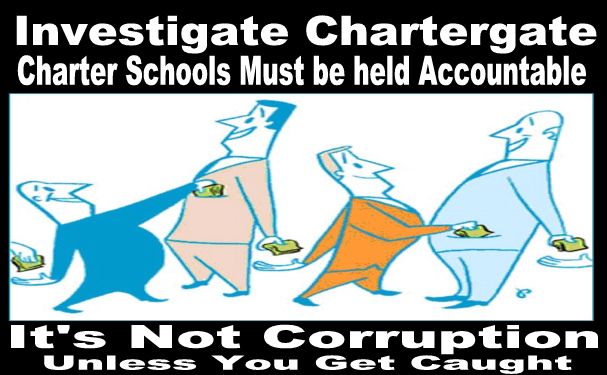Charter Schools: The Next Nationwide Scandal

As public school districts across the U.S. increasingly struggle with diminishing funds and a less-than-stellar reputation for quality education, charter schools have become a more popular option for parents — especially those in poorer urban areas where traditional private schools are not an affordable option. Charter school organizations, while generally structured as nonprofits, said they could do more with fewer resources and improve students’ academic performance.
But while they seek public funds, the evidence suggests that some of these school operators are less than transparent about how they want to spend these funds, while others have balked at disclosing how students within their schools are performing in the classroom.
One such charter school operator is KIPP, which manages 183 charter schools enrolling 70,000 students from coast to coast. According to the Center for Media and Democracy, in recent years KIPP informed the Department of Education (DOE) that some information about its revenues and classroom performance is “proprietary,” even though the company has applied for millions in grants paid for by federal taxpayers. In fact, one grant application contained redacted information related to the amount of money KIPP received from private foundations.
Meanwhile, financial statements submitted to the DOE reveal that, while receiving over $61 million in private grants in 2013, KIPP spent:
- Over $400,000 on advertising and almost $5 million on travel expenses, including $1.2 million at Walt Disney World.
- Almost $14 million on compensation, including over $1.2 million on nine executives, plus another $2 million on retirement packages.
- $1.2 million to an analytics consultant in an attempt to rebuff any DOE concerns over academic performance and drop-out rates.
A 2011 university study also found that KIPP schools’ performance was not necessarily better than their competing schools in public education districts, and in fact, on the metrics were sometimes even worse. Many schools were found to have a higher attrition rate. And that one leading KIPP selling point, the retention of African American male students, was often a struggle — 40 percent of African American boys from the sixth to eighth grades left KIPP schools.
Other investigations found similar problems with other charter school systems across the U.S. In New Orleans, where public schools transformed into virtually an all-charter system after Hurricane Katrina, the city’s experiment has brought at best dubious results when it comes to attrition, graduation rates and the number of school suspensions. As the emphasis over the past decade focused more closely on student testing, “difficult to teach” kids have fallen through the cracks and critics say too many students are simply abandoned by the revamped school system.
And in Ohio, Politico reported that the Buckeye State’s struggles with charter schools could have damaged Gov. John Kasich’s political prospects if he had miraculously become the Republican presidential nominee. While applying for federal charter school grants, the state’s charter school director reportedly neglected to include failing grades in key charter schools’ performance analyses. The state received $71 million in federal funds. Some state leaders questioned the value of the awards given charter schools’ declining reputation in the state. The number of poorly performing schools increased from nine to Charter Schools: The Next Nationwide Scandal:


